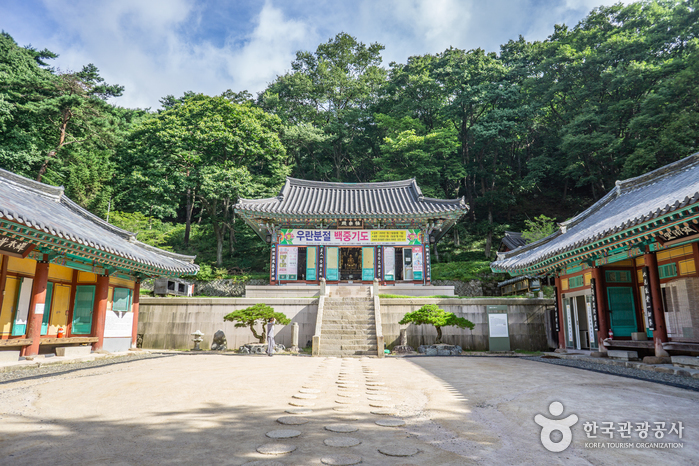Gyeongsan Seonbonsa Temple (선본사(경산))
19.5Km 2021-12-02
699, Gatbawi-ro, Gyeongsan-si, Gyeongsangbuk-do
+82-53-851-1868
Seonbonsa Temple is a centrally administered temple of the Jogye Order. It was originally built in 491 by Geukdal, and later repaired in 1641. The temple is home to many important cultural treasures, including the Stone Seated Buddha at Gwanbong Peak (Treasure), Three-story Stone Pagoda (Gyeongsangbuk-do Cultural Heritage), and stone lanterns.
Chilgok Patriots & Peace Memorial (칠곡호국평화기념관)
19.6Km 2025-01-17
1580, Gangbyeon-daero, Chilgok-gun, Gyeongsangbuk-do
+82-54-979-5504
Chilgok Patriots & Peace Memorial is a memorial museum dedicated to the soldiers who seized victory by holding up a fierce battle at Nakdonggang River's line of defense for 55 days in Chilgok during the Korean War. The museum consists of a spacious four-story high building with two basement floors and an outdoor exhibition with a variety of artifacts. The museum also has battle miniatures and experience facilities to help foster patriotism and appreciation for the soldiers who gave their lives to protect the country.
Olive Young - Gyeongsan Sadong Branch [Tax Refund Shop] (올리브영 경산사동점)
19.7Km 2025-10-28
72 Baekja-ro, Gyeongsan-si, Gyeongsangbuk-do


 English
English
 한국어
한국어 日本語
日本語 中文(简体)
中文(简体) Deutsch
Deutsch Français
Français Español
Español Русский
Русский